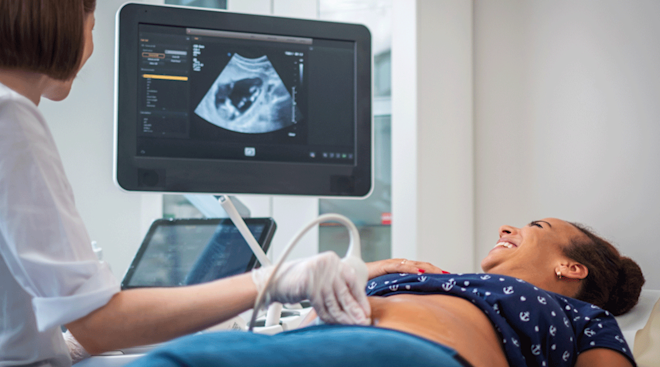Maternity Care Deserts: What They Are and How to Get Prenatal Care
When it comes to maternal health, the United States notoriously lags behind other high-income nations. We are one of a handful of developed countries without paid parental leave at the national level. Maternal mortality rates here have actually worsened over the last 30 years, per the Centers for Disease Control and Prevention (CDC). And a 2022 report from the March of Dimes warns that maternity care deserts—areas completely lacking obstetric care—are on the rise. A staggering 36 percent of all US counties are designated as maternity health deserts—and with 6.9 million women residing in these no-access areas, the impact is far-reaching. Here’s what it all means.
In this article: What are maternity care deserts? Why are maternity care deserts on the rise? What to do if you live in a maternal care desert
According to the March of Dimes, a maternity care desert is a county with zero obstetric providers—meaning no OBs, certified nurse midwives or certified midwives. There are no hospitals offering maternity care or birth centers in a maternity care desert; they tend to be in rural areas, and force pregnant individuals to travel an hour or more for prenatal care, delivery and postnatal services.
Anne Rossier Markus, PhD, chair of the Department of Health Policy and Management at the Milken Institute School of Public Health at the George Washington University, says that she appreciates the way the term provides a visual representation of the issue, but she has some reservations about the negative connotations surrounding maternity care deserts. “It also implies that there’s nothing there, which isn’t true,” she says. “The community is living there. There’s history, there are relationships, there are practices there.” She adds that she hopes to see more culturally sensitive and nuanced language emerge.
Low-access areas are another important part of the larger maternal care picture. These counties do have hospitals or birth centers with obstetric care, but they’re few and far between, with resources that are stretched thin. Areas in which 10 percent or more of the female population have no health insurance are included in this category, according to the March of Dimes.
The data is clear: Lack of access to pre- and postnatal care has serious consequences. Research shows it raises the risk of preterm birth and correlates with longer stays in the hospital after delivery. Pregnant individuals who travel more than 50 miles for prenatal care are also more likely to develop high blood pressure during pregnancy, according to studies. And maternal deaths—which are are often considered preventable—are proven to be more common in these areas.
Not surprisingly, these issues are exacerbated by racial and economic disparities. Nationwide, the maternal mortality rate is two-and-a-half times higher for Black individuals, according to the National Library of Medicine. “The people that tend to be the most impacted are Black communities where they stand to lose more obstetric units,” says Ndidiamaka Amutah-Onukagha, director and founder of the Center for Black Maternal Health and Reproductive Justice at Tufts University. “A statistic that I think is very stark is that 30 percent of rural communities of color are at least 30 miles away from maternity care, versus 18 percent of mostly white rural areas,” she says. “This is the root of these inequities in the healthcare system. And the ability for women to access care is rooted in structural racism. That’s how we really look at the broader lens of inequity.”
Socioeconomic status plays a part as well. According to the March of Dimes, the proportion of women living in counties below the national median household income is twice as high for maternity care deserts as it is in full-access counties.
There are many reasons why maternity care deserts are on the rise, but much of it comes down to simple economics. Medical deserts tend to encompass low-income areas that are already short on resources.
“One of the main factors that has been singled out is the relatively fast succession of closings of obstetric units and hospitals that are located in more rural areas,” says Markus. According to the American Hospital Association, between 2010 and 2021, 136 hospitals in rural areas closed entirely, with other facilities closing just obstetric units.
When a community doesn’t see many births in a year, it can seem hard to justify the expense of these dedicated services. And this is becoming even more pronounced as rural areas become less populated. According to the 2020 census, 86 percent of Americans live in metropolitan areas, and cities have seen rapid growth in contrast with only modest population growth. This means that even fewer people are living in already sparsely populated rural areas. As residents leave rural areas, so do doctors. Suffice it to say that staffing shortages are a contributing factor to the rise of maternity care deserts.
Amutah-Onukagha notes that insurance reimbursement can also be challenging in the best of circumstances, and people in these low-resource areas tend to use Medicaid, which is reimbursed at a lower rate than private insurance. Maternity and newborn-related costs, from labor to supplies, make up the top expenditure category for payments made to hospitals by insurance companies. “And then when you couple that with low birth volumes, the system just is not sustainable from a financial perspective,” says Amutah-Onukagha. “If you have a low-birth volume hospital in an underserved community, then that’s going to be probably the first on the list to go.”
The COVID-19 pandemic certainly didn’t help things either. Though it’s too soon to tell the full impact, we already know that it resulted in hundreds of billions of dollars in lost revenue for US hospitals and healthcare systems, not to mention the emotional and physical toll it has taken on doctors, nurses and other support staff. The healthcare shortage is only predicted to worsen as a result. Additionally, people who have been pregnant since 2020 have felt the impact of the pandemic, as resources were diverted to COVID-related care.
If you’re expecting and live in a maternity care desert or low-access area, getting much-needed medical attention can feel like a challenge, to say the least. Community initiatives vary greatly but often include options like mobile health units and telehealth coverage. If cost or lack of insurance is a barrier, see if any of the resources at USA.gov help. Here are some other possible ways to get the care you need:
Try telehealth services
If there’s one good thing that has come from the pandemic, it has been the increased availability of telehealth options. Obviously telehealth is not a feasible solution for all pregnancy-related concerns, but it can be immensely useful for prenatal and postnatal counseling and care. Services like childbirth classes, breastfeeding support and mental health check-ins are excellent candidates for telehealth. However, a lack of broadband internet in some rural areas can be a barrier, as well as inconsistent insurance policies regarding coverage of telehealth.
See other health professionals
In low- and no-access communities without dedicated maternal care, nurse practitioners and family medicine doctors end up picking up a lot of the slack. “Nurse practitioners don’t specifically deliver babies, but they do provide other types of care,” says Markus. “They also tend to be more commonly located in remote areas, compared to physicians,” so they might offer important primary care, including prenatal care. If there’s a hospital or community clinic nearby, it’s worth looking into whether any of their providers offer maternal care. For family doctors, labor and delivery and maternity care is “part of their training and scope of practice,” explains Markus.
Reach out to support people
Don’t be ashamed to ask for help from friends, family members and community members—whether you’re looking for internet access or a place to stay that’s closer to appointments.
Work with a doula
Research suggests that pregnant individuals who receive assistance from a doula have better outcomes, ranging from lower rates of c-section to higher rates of successful breastfeeding. Ask around in your community to see if there are any doulas practicing locally. Cost could be a barrier, as doula care is not always reimbursable by insurance, but it’s worth looking into. “One of the things that I think is really important is to just honor the role of doulas in standing in the gap where the system really has fallen down,” says Amutah-Onukagha.
Contact your local representatives
Our elected officials are meant to help us, so don’t be afraid to pick up the phone and call the offices of the mayor, local council members or assembly people. They may be able to point you toward resources that you weren’t aware of, such as transportation opportunities or mobile health clinics. At the very least, it’s important that they hear from constituents that this is a real issue affecting the communities they serve.
Seek mental health support
Mental healthcare for pregnant and postpartum individuals shouldn’t be forgotten. For free 24/7 assistance via phone or text, contact the National Maternal Mental Health Hotline. You should get a response within a few minutes and will be connected with a trained professional counselor in English or Spanish—with interpreter services available in 60 languages. They can also direct you to local telehealth services and support groups.
The reality is that there are possible solutions to accessing care, even in maternal care deserts, but they require a lot of work, research and effort. Until our leaders take action to address this problem and diminish disparities in care, many pregnant people will have to take on the burden of being their own best advocate.
About the experts:
Ndidiamaka Amutah-Onukagha, PhD, MPH, CHES, is an associate professor of public health and community medicine and the assistant dean of diversity, equity, and inclusion at Tufts University in Boston. She is also the founder and director of the Center for Black Maternal Health and Reproductive Justice and Mother Lab at Tufts.
Anne Rossier Markus, PhD, MHS, JD, is a professor and chair in the Department of Health Policy and Management at the Milken Institute School of Public Health at George Washington University.
Please note: The Bump and the materials and information it contains are not intended to, and do not constitute, medical or other health advice or diagnosis and should not be used as such. You should always consult with a qualified physician or health professional about your specific circumstances.
Plus, more from The Bump:
Navigate forward to interact with the calendar and select a date. Press the question mark key to get the keyboard shortcuts for changing dates.




















































